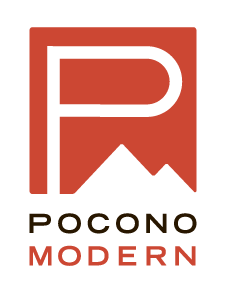What is a "Traditional" Home?
Have you ever seen the show "House Hunters" on HGTV? It's one of my favorites. I love seeing which houses people are attracted to and what they do to the homes after closing. I have to admit, I'm often baffled at what people are looking for in a house and what they consider their tastes to be. I would say that most people, young and old, seem to gravitate to more "traditional" style homes. This disturbs me. Today I wanted to examine what makes a home "traditional" in an effort to figure out why most people seem to prefer it.
First and foremost, the word "traditional" means something that has not changed over time. Traditional foods are dishes that have been made the same way for generations. Traditional houses are ones that emulate historical styles such as Colonial, Tudor, Victorian, Queen Anne, or Mediterranean, to name but a few. People feel connected to these styles because they have seen many examples of each and are familiar with them. Perhaps this familiarity is what breeds comfort and contentment with these styles.
Inside our "traditional" homes, we typically find "traditional" interiors. From wrought iron dining tables to overstuffed sofas, to wing chairs with gold damask upholstery, it's all there. With swags on the windows and oriental rugs on the floor, the "traditional" home owner can go into any store and find plenty of inexpensive furniture to suit their tastes. It's also worthy to note that most of the interior offerings in the "big box" stores also cater to those furnishing their "traditional" homes. I guess you could say that this makes traditional homes easier to furnish.
Lastly, we should talk about maintenance. Colonial builders used things like wood clapboard siding and divided light windows to construct their homes. These represented the best marriage of technology and craftsmanship for the time. Today, new innovations have allowed us to engineer products that are virtually maintenance-free and offer comparable appearances to "traditional" designs without the cost or headaches that an older home offers. If you wanted to build a historically accurate "traditional" home complete with extensive millwork, wood windows and siding, slate roofing, hand laid masonry foundations, and plaster interiors, you would be looking at a hefty sum indeed. I think most people would rather choose cheap and easy.
So there we have it: comfort, availability, and affordability. When you look at it like that, it's easy to see why people are biased towards "traditional" homes. Unfortunately, there is a problem. The problem is that "cheap and easy" is not usually associated with quality and desirability. As a society, we have spent the last few decades building houses that have no long-term value and will likely be torn down, rather than fixed up. What people consider to be "traditional" or "American" in terms of style are mostly poor copies of something that was once a genuine reflection of our ability and craftsmanship. Your cabinets may be honey-colored with paneled doors, but if you look closely you will find no real joinery on the drawer fronts and no solid wood anywhere. Your hardwood floors probably came pre-finished with only a few layers on the top that are real wood and the rest is something else. But as long as there are stainless steel appliances and granite countertops, everything will be alright. (Where did the settlers put their KitchenAid Mixer?)
The sad reality is that I really can't be upset about how uninformed people are about design. We did it to ourselves. Architects gave away so much of our profession that it's no wonder every homeowner believes that they know how to design an interior. I suggest that we get off of our high horses and take back our right to work for regular people who would love to live in great spaces. Let's create some great examples of modern design that are warm and inviting instead of stark and cold. Let's empower people to go on a housing diet and design more efficient homes that do the work of much larger ones so the average person can afford the best of what the 21st century has to offer. Finally, let's volunteer our time to those who could actually use it, instead of complaining how much work has slowed down. If you are looking to do some pro-bono work, there are hundreds of potential clients in your local home improvement store just asking for someone to help them. They are the ones staring up at the ceramic tile displays with blank looks on their faces. Simply introduce yourself and ask them if they need any help making a selection. It's really that easy. Almost as easy as picking out those new Venetian blinds for your Tuscan-inspired kitchen in your Tudor-style home.




